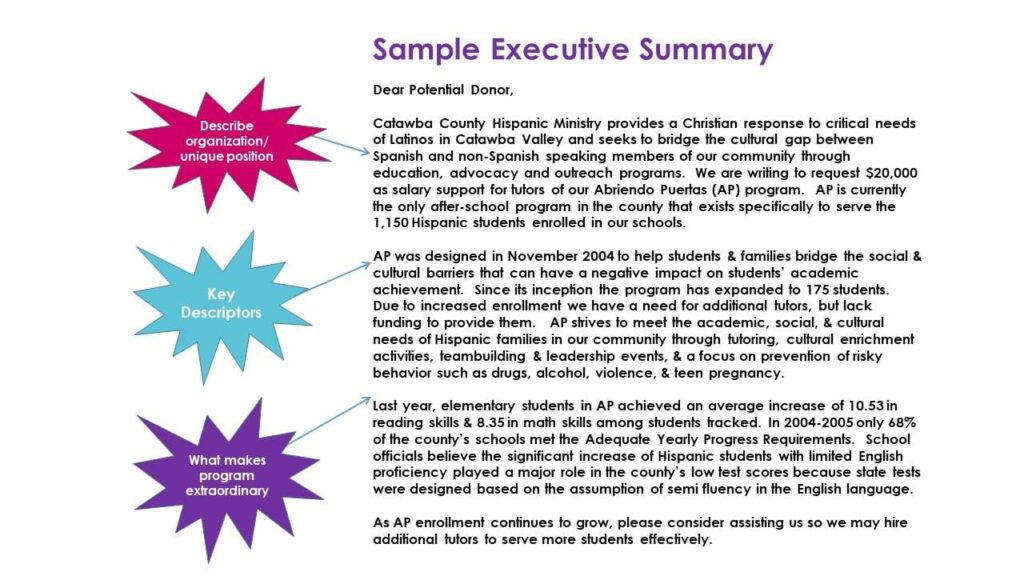An executive summary is a concise overview of a larger document, such as a report, proposal, or business plan. Its primary purpose is to provide a brief summary of the main points, highlighting the key findings, recommendations, and conclusions. A well-crafted executive summary can make or break the success of your report, as it is often the first thing that readers will see. In this article, we will explore the importance of an executive summary, its benefits, and provide practical tips on how to prepare one that sells your report.
Benefits of an Executive Summary
An executive summary offers several benefits, including:
- Time-saving: It provides a quick overview of the report, saving readers time and effort.
- Increased readability: It helps readers understand the main points and key findings without having to read the entire report.
- Improved comprehension: It facilitates a deeper understanding of the report’s content and context.
- Enhanced credibility: A well-written executive summary can establish the author’s credibility and expertise.
Key Elements of an Effective Executive Summary
A good executive summary should include the following key elements:
| Element | Description |
|---|---|
| Introduction | Brief overview of the report’s purpose and scope |
| Problem statement | Clear description of the problem or issue addressed in the report |
| Methodology | Summary of the research methods and approaches used |
| Key findings | Summary of the main results and discoveries |
| Recommendations | Summary of the proposed solutions or actions |
| Conclusion | Summary of the report’s main conclusions and implications |
Practical Tips for Writing an Executive Summary
To write an effective executive summary, follow these practical tips:
- Keep it concise: Aim for a length of around 5-10% of the original report.
- Use clear and simple language: Avoid technical jargon and complex terminology.
- Focus on the main points: Highlight the key findings, recommendations, and conclusions.
- Use an active voice: It is more engaging and easier to read than passive voice.
- Use bullet points and headings: To make the summary more readable and scannable.
Case Studies: Examples of Effective Executive Summaries
Let’s take a look at a few examples of effective executive summaries:
A report on climate change might include an executive summary that highlights the key findings, such as:
- Rising global temperatures and sea levels
- Increased frequency and severity of extreme weather events
- Recommendations for reducing carbon emissions and transitioning to renewable energy sources
A business plan for a new startup might include an executive summary that outlines the company’s mission, products, and marketing strategy.
First-Hand Experience: Lessons Learned
As a seasoned writer, I have learned the importance of crafting a compelling executive summary. In one instance, I was tasked with writing a report on market trends for a client in the finance industry. The report was lengthy and complex, but the executive summary needed to be concise and easy to understand. I focused on highlighting the key findings, such as the growth of emerging markets and the impact of technological advancements on the industry. The client was impressed with the summary, and it helped to establish my credibility as a writer.
Conclusion
In conclusion, an executive summary is a critical component of any report, proposal, or business plan. By including the key elements, such as an introduction, problem statement, methodology, key findings, recommendations, and conclusion, you can create a compelling executive summary that sells your report. Remember to keep it concise, use clear and simple language, and focus on the main points. With practice and experience, you can master the art of crafting an effective executive summary that grabs the reader’s attention and leaves a lasting impression.
By following the tips and guidelines outlined in this article, you can create an executive summary that:
- Captures the essence of your report
- Grabs the reader’s attention
- Establishes your credibility and expertise
- Helps to increase the report’s readability and comprehension
So, the next time you need to write an executive summary, remember to keep it concise, focused, and engaging. With a well-crafted executive summary, you can increase the impact of your report and leave a lasting impression on your readers.

